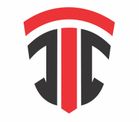A triathlon is an endurance sports event consisting of swimming, cycling and running over various distances. As a result, proficiency in swimming, cycling, or running alone is not sufficient to guarantee a triathlon athlete a competitive time; trained triathlon athletes have learned to race each stage in a way that preserves their energy and endurance for subsequent stages. In most modern triathlons, these events are placed back-to-back in immediate sequence and a competitor's official time includes the time required to "transition" between the individual legs of the race, including any time necessary for changing clothes and shoes.
History
According to triathlon historian and author Scott Tinley, the origin of triathlon is anecdotally attributed to a race in France during the 1920s-1930s that was called variously "Les trois sports", "La Course des Débrouillards", and "La course des Touche à Tout". Nowadays, this race is held every year in France near Joinville-le-Pont, in Meulan and Poissy. In 1920, the French newspaper "L´Auto" reported on a competition called "Les Trois Sports" with a 3 km run, 12 km bike, and a swim across the channel Marne. Those three parts were done without any break. There are also articles in French newspapers about a race in Marseille in 1927. There is a 1934 article about "Les Trois Sports" (the three sports) in the city of La Rochelle, a race with: (1) a channel crossing (c. 200 m), (2) a bike competition (10 km) around the harbor of La Rochelle and the parc Laleu, and (3) a run (1200 m) in the stadium André-Barbeau.
[edit] Modern triathlon
Early triathlons were held as off-beat training exercises for runners. The first known swim/bike/run triathlons were held at Mission Bay, San Diego, California in 1974. Organized by members of the San Diego Track Club, the events were held on summer evenings and were intended as no more than light-hearted breaks in the normal grind of training for marathons and 10Ks. This occurrence is well-documented and was not based on the French events. Amongst them were runners, swimmers and cyclists and before long, training sessions turned into informal races. Directed and conceived by Jack Johnstone and Don Shanahan, the first Mission Bay Triathlon was held on September 25, 1974 and welcomed 46 athletes. This date is celebrated as the day modern triathlon began.
[edit] Ironman
The first modern long-distance triathlon event was the HawaiianIronman Triathlon. It included a 2.4-mile (3.86-kilometre; 77 lap) swim, a 112 mi (180.2 km) bike ride, and a 26.2 mi (42.195 km) run. It was conceived during the awards ceremony for the 1977 Oahu Perimeter Relay (a running race for 5-person teams).
Among the participants were numerous representatives of both the Mid-Pacific Road Runners and the Waikiki Swim Club, whose members had long been debating which athletes were more fit: runners or swimmers. On this occasion, U.S. Navy Commander John Collins pointed out that a recent article in Sports Illustratedmagazine had declared that Eddy Merckx, the great Belgian cyclist, had the highest recorded "maximum oxygen uptake" of any athlete ever measured, so perhaps cyclists were more fit than anyone. Collins and his wife, Judy, had taken part in the triathlons staged in 1974 and 1975 by the San Diego Track Club in and around Mission Bay, California, as well as the Optimist Sports Fiesta Triathlon in Coronado, California in 1975.
A number of the other military athletes in attendance were also familiar with the San Diego races, so they understood the concept when Collins suggested that the debate should be settled through a race combining the three existing long-distance competitions already on the island: the Waikiki Roughwater Swim (2.4 mi/3.862 km), the Around-Oahu Bike Race (115 miles (185 km); originally a two-day event) and the Honolulu Marathon (26.219 mi/42.195 km). No one present had ever done the bike race so they did not realize it was a two-day, not one-day, event. Collins calculated that, by shaving 3 miles (5 km) off the course and riding counter-clockwise around the island, the bike leg could start at the finish of the Waikiki Rough Water and end at the Aloha Tower, the traditional start of the Honolulu Marathon. Prior to racing, each athlete received three sheets of paper listing a few rules and a course description. Handwritten on the last page was this exhortation:
“
Swim 2.4 miles! Bike 112 miles! Run 26.2 miles! Brag for the rest of your life!
”
— Commander Collins, (1978)
With a nod to a local runner who was notorious for his demanding workouts, Collins said:
“
Whoever finishes first, we'll call him the Ironman.
”
— Commander Collins, (1978)
Of the fifteen men to start off in the early morning on February 18, 1978, twelve completed the race and the world's first Ironman, Gordon Haller, completed it in 11 hours, 46 minutes, and 58 seconds.
